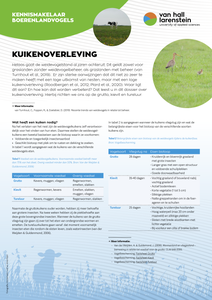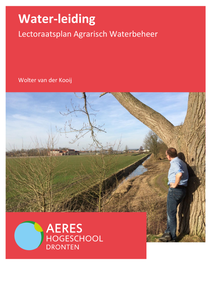The stability of upstream deposited tailings dams is dependent on maintaining a drawn down phreatic surface and unsaturated profile in its outer edge. However, it has been speculated that intense rainfall events could induce unexpected translation of pore air and water pressures into the tailings profile and thus compromise the effective stress in the unsaturated zone or result in a sudden rise in the phreatic surface. This phenomenon, known as the Lisse effect, has been observed and studied in hydrological sciences to explain the rapid delivery of antecedent hillslope groundwater during storm events. However, the phenomenon has not been comprehensively applied to evaluating tailings dam slope stability. In this paper, the outcomes of controlled observations of the phenomenon in column and analytical experiments, are assembled and evaluated in terms of the surface water application volumes and rate, the properties of the porous media and the resultant nature of pore pressure and phreatic surface responses. In addition, application of applied theories to evaluate the rapid transmission of pore pressures through a profile in response to an advancing wetting front, leads to the development of a methodology that could be applied to tailings materials of a range of hydraulic conductivities and water retention characteristics. The theory is applied to a series of profiles of different tailings porous media, using varied water application rates. Resultant perturbations in phreatic surface elevation and changes to pore pressures in the unsaturated zone are used to evaluate changes in effective stress distribution in the unsaturated outer wedge and subsequent stability criteria. A possible evaluation algorithm for assessing stability criteria is suggested.
MULTIFILE
Recent years have seen a global rise in the failure of tailings dams. Studies investigating the causes of slope failure often recognise high intensity rainfall events to significantly contribute to liquefaction, erosion and overtopping. This study aims to investigate the influence of alternative physical and geohydrological processes that, under tension saturation conditions, contribute to slope instability in tailings dams. It has been suggested that the generation of transient pressure wave mechanisms by high intensity rainfall events, surface ponding and wetting front advancement result in the formation of an induced pressure head that triggers the mobilization of pre-event water. In order to quantify these physical processes, this study included the analysis of rapid transmission conditions in a silica fines mix, with similar physical and hydraulic characteristics as platinum tailings. A tall leak-proof soil column, containing the soil sample compacted to in-situ dry bulk density, was fitted with seven observation ports. Each port consisted of a pore air pressure probe, a mini tensiometer and a time domain reflectometry probe. After set-up and initial stabilisation, three separate artificial high intensity rainfall events were applied to the surface. Monitoring of hydraulic state variables was recorded at thirty second intervals by automatic logging, thereby enabling the analysis of measured outcomes. Observations showed instant spikes in pore air pressure ahead of the wetting front, as well as a number of delayed responses. The interpretation of lab results led to the conclusion that pressure diffusion mechanisms throughout the porous medium, could result in the rapid release and mobilisation of previously stagnant antecedent moisture, thereby enabling phreatic levels to rising rapidly and in excess to the amount of surface infiltration. Also, since an increase in pore water pressure is likely to cause a reduction in shear strength, it is suggested that these physical and geohydrological processes could have an adverse impact on the stability of tailings dams.
MULTIFILE
Op welke manier draagt biologische landbouw bij aan een betere wereld, en welke uitgangspunten worden hierbij gebruikt? In een serie van dertien thematische factsheets gaan we hier dieper op in. Onderbouwd door wetenschappelijke literatuur geven we aan wat de meerwaarde van biologische landbouw kan zijn voor burgers, boeren en beleidsmakers. Deze keer is het thema mestkwaliteit.
DOCUMENT

Helaas gaat de weidevogelstand al jaren achteruit. Dit geldt zowel voor graslanden zonder weidevogelbeheer als graslanden met beheer. Er zijn sterke aanwijzingen dat dit niet zozeer te maken heeft met een lage uitkomst van nesten maar met een lage kuikenoverleving. Waar ligt dit aan? En hoe kan dat worden verbeterd? Dat leest u in dit dossier over kuikenoverleving. Hierbij richten we ons op de grutto, kievit en tureluur.
DOCUMENT

Naast bodembeheer is waterbeheer in de agrarische sector een belangrijk thema. Door klimaatverandering zijn de weersextremen sterk toegenomen. Tijden van wateroverlast worden afgewisseld met lange periodes van droogte. De verbeteringen van het watersysteem in Nederland zijn de afgelopen honderden jaren vooral gericht geweest op het voorkomen van schade door wateroverlast. De afgelopen jaren wordt het steeds duidelijker zichtbaar dat er meer maatregelen genomen moeten worden om droogteschade te voorkomen. Dat vraagt een enorme paradigmaverschuiving bij agrariërs, waterschappen en overheden. In dit lectoraatsplan wordt de problematiek van agrarisch waterbeheer uitgewerkt, worden onderzoeksvragen en doelstellingen geformuleerd en wordt aangegeven hoe het lectoraat de problematiek wil gaan aanpakken: Water-Leiding.
DOCUMENT

Bij trendanalyses en de totstandkoming van de staat van Instandhouding van wildlijstsoorten wordt vrijwel geen gebruik gemaakt van gegevens van wildtellingen die door de wildbeheereenheden worden verzameld. Het Centraal Bureau voor de Statistiek heeft eerder geoordeeld dat dit type data van WBE’s niet bruikbaar zijn, omdat er twijfels bestonden over de betrouwbaarheid en verifieerbaarheid van de gegevens. Deze aspecten zijn belangrijk omdat Wildtellingen de basis vormen voor het opstellen van faunabeerplannen, faunabeleid en besluitvorming daaromtrent.De Minister voor Natuur & Stikstof heeft aangekondigd om samen met alle betrokken partijen te willen werken aan de verbetering van het telprotocol van WBE’s en de verzameling van gegevens. Dit moet leiden tot een wetenschappelijk gedragen wildsoorten-telprotocol, analyse- en beoordelingssystematiek. Onder procesbegeleiding van Van Hall Larenstein zijn het Centraal Bureau voor de Statistiek, de Fauna Beheer Eenheden, de Koninklijke Jagers Vereniging en de Zoogdiervereniging aan de slag gegaan om te komen tot een breed gedragen wetenschappelijke methode om populatietrends van de vijf wildsoorten te kunnen bepalen. De methode moet gevalideerd kunnen worden door het CBS, voldoen aan de criteria om aan de Nationale Databank Flora en Fauna (NDFF) te worden toegevoegd, complementair zijn aan de huidige methodiek en teldata van het Netwerk Ecologische Monitoring (NEM). Bovendien moet de data transparant tot stand komen zodat er geen misverstanden kunnen ontstaan over de kwaliteit van de resultaten.In dit rapport doen we verslag van het proces om te komen een wetenschappelijk gedragen wildsoorten-telprotocol, analyse- en beoordelingssystematiek.De rapportage richt zich op de volgende vier onderdelen:1. Procesbegeleiding: dit zijn de stappen geweest die door Van Hall Larenstein zijn uitgevoerd om het proces te begeleiden.2. Toezien: een aantal stappen worden door KNJV en CBS uitgevoerd. Voor deze onderdelen is Van Hall Larenstein niet verantwoordelijk, maar ziet er wel op toe dat het gebeurd.3. Duiding: in het onderdeel duiding wordt door Van Hall Larenstein in samenwerking met studenten en partners aanvullend onderzoek uitgevoerd om de wetenschappelijke kwaliteit te duiden van specifieke onderdelen. In dit geval heeft dit zich gericht op de effecten van warmtebeeldcamera’s op de tellingen van hazen.4. Vervolg: tenslotte worden een aantal aandachtspunten voor het vervolg van dit traject aangegeven.
DOCUMENT

De voedsel- en warenautoriteit is met nieuwe cijfers gekomen waaruit blijkt dat de hoeveelheid residuen van bestrijdingsmiddelen(MRL's )omlaag moeten en gelukkig ook bij veel winkels dalende zijn. Daarmee wordt gesuggereerd en geconcludeerd dat het voedsel veiliger en gezonder is. Waar ik echter nergens iets over lees (en dus kennelijk ook geen onderzoek naar wordt gedaan) is hoe het daadwerkelijk gesteld is met de voedselkwaliteit en dan bedoel ik met name de voedingswaarde en de percentages vitaminen en mineralen. Uit een ouder onderzoek bleek namelijk dat deze gedurende 20 jaar sterk zijn afgenomen.Dat is ernstig.
DOCUMENT
Hieronder vindt u de presentaties van het webinar Insect culture in the Netherlands for feed and food op 19 januari 2021.
MULTIFILE

De toenemende bacterieresistentie tegen antibiotica bij de mens èn in de aquacultuur vraagt om alternatieven. Op de HAS Hogeschool is, in samenwerking met de Wageningen Universiteit en NGN Products, via in vitro studies getest of essentiële oliën een remmend effect hebben op de groei van twee veelvoorkomende pathogenen in de garnalenteelt: Vibrio harveyi en Vibrio alginolyticus. De geteste essentiële oliën lieten een vergelijkbare, of significant hogere remming zien dan het antibiotica oxytetracycline. Vooral oregano en tijm lijken veelbelovend in de garnalenteelt en mogelijk ook in de productie van visvoeders.
DOCUMENT
